It looks like you're using an Ad Blocker.
Please white-list or disable AboveTopSecret.com in your ad-blocking tool.
Thank you.
Some features of ATS will be disabled while you continue to use an ad-blocker.
share:
I noticed that, whenever Puma Punku is being discussed, people often ask whether or not the
H-Blocks were designed to interconnect. I found two sources that may shed light on
this question, it won't completely demystify the Puma Punku riddle but it might help getting a bit closer to the true intentions of the builders. But
first, let's have a look at two rather special block fragments that can be found at the Puma Punku site:

These seem to be unrelated at first, but when looking closely at the fractures and edges, it seems likely that these were once part of a single block. They also seem to contain an H-Block segment, as the following animation shows (own work):
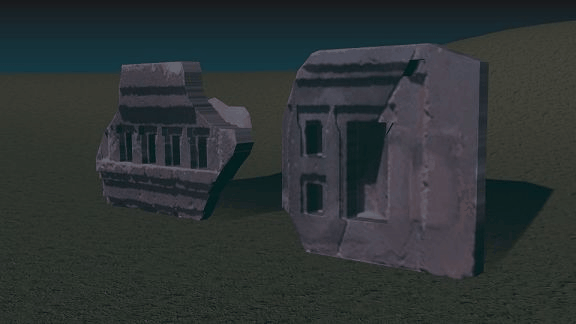
The horizontal lines of the cornices align perfectly when assembled in this fashion. It's important to mention that the stylized H-Block as shown above is much smaller than the original ones, which suggests that these two fragments may have been a model of what the final construction might have looked like (at least in parts). There are also other hints that the builders of the time in that region seemed to use smaller scale stone models to illustrate design principles as can be seen here (Puma Punku, note the steps) and also here (Sayhuite Boulder, Peru).
Early illustration of miniature model block at Puma Punku (source):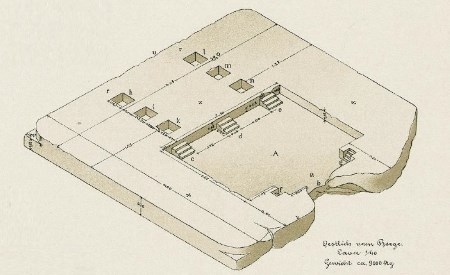
There are even other features that are found in both large and small sizes, like the embossed cross elements shown below (larger images of each block can also be viewed here and here):
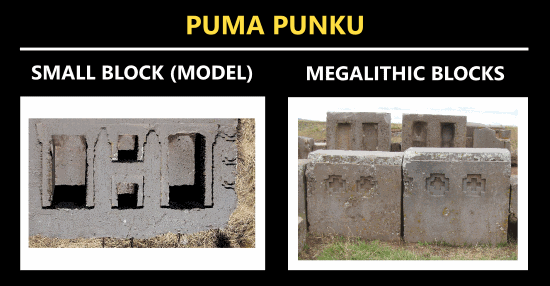
If we now consider that these are in fact models for a life-size version, one could probably assume that the front face patterns of the H-Blocks (and those of some of the other blocks at Puma Punku) mainly served ornamental and not so much functional purposes. This seems to be substantiated by the fact that we find at least three different types of H-Blocks at the site (all varying slightly in dimensions and artwork). The design of the blocks, in general, also seems to be inspired by the Chakana (or Andean Cross) which is a common feature throughout Andean culture and architecture.
In addition to the above, it should be mentioned that German archaeologist Max Uhle and geologist Alphons Stübel already proposed a similar solution for a probable H-Block configuration as intended by the builders. In their publication "The Ruins of Tihuanaco in the Highlands of Ancient Peru", one of the earliest but definitley most extensive archaeological descriptions of Puma Punku, they come up with the diagram below (also see "Part Two: Text" p.28-39):

For those interested in accurate measurements of the various blocks at Puma Punku, it may be worth taking a closer look at Uhle's and Stübel's pamphlet, since they provide a lot of detailed information about the site, including pretty precise depictions of the many megaliths they encountered during their field trip back in 1892 (see examples below, click thumbnails for larger versions).



The entire PDF can be donwloaded here via the download button in two versions (48mb or 176mb, the large file size is due to the many drawings included in the publication).
While there have been quite a few attempts of a theoretical reconstruction of the site, for example here and here, I haven't seen any that takes into account the model character of the smaller blocks as indicated in this thread.
Open questions remain
To me, the industrial-style look, the modular layout and the unknown stoneworking methods are still intriguing (to say the least). It's almost a contradiction when looking at the overall finish of the stonework and, embedded therein, the ornamental features known from traditional Andean architectural styles.
Please note that this thread focused mainly on the H-Blocks and their implementation in the overall design concept. Of course there are many other elements at Puma Punku that indeed seem to be more of functional rather than ornamental nature (eg. various ancient water pipe segments, blocks with t-grooves meant to interconnect via metal clamps and a number of strangely shaped blocks of unknown purpose).
However, I do hope that digging deeper into the ground will bring to light even more hints and insights allowing us to, step by step, unravel the mystery of this fascinating site.
SOURCES AND LINKS:
------------------------------------------
01. Monolithic Madness: H-Blocks Puma Punku Bolivia
02. The Ruins of Tihuanaco in the Highlands of Ancient Peru
03. Puma Punku Reconstruction: Visualization 1
04. Puma Punku Reconstruction: Visualization 2
05. More information about geologist Alphons Stübel
06. Influence of the Chakana/Inca Cross on Andean Architecture
07. Bio of archaeologist Max Uhle

These seem to be unrelated at first, but when looking closely at the fractures and edges, it seems likely that these were once part of a single block. They also seem to contain an H-Block segment, as the following animation shows (own work):

The horizontal lines of the cornices align perfectly when assembled in this fashion. It's important to mention that the stylized H-Block as shown above is much smaller than the original ones, which suggests that these two fragments may have been a model of what the final construction might have looked like (at least in parts). There are also other hints that the builders of the time in that region seemed to use smaller scale stone models to illustrate design principles as can be seen here (Puma Punku, note the steps) and also here (Sayhuite Boulder, Peru).
Early illustration of miniature model block at Puma Punku (source):

There are even other features that are found in both large and small sizes, like the embossed cross elements shown below (larger images of each block can also be viewed here and here):

If we now consider that these are in fact models for a life-size version, one could probably assume that the front face patterns of the H-Blocks (and those of some of the other blocks at Puma Punku) mainly served ornamental and not so much functional purposes. This seems to be substantiated by the fact that we find at least three different types of H-Blocks at the site (all varying slightly in dimensions and artwork). The design of the blocks, in general, also seems to be inspired by the Chakana (or Andean Cross) which is a common feature throughout Andean culture and architecture.
In addition to the above, it should be mentioned that German archaeologist Max Uhle and geologist Alphons Stübel already proposed a similar solution for a probable H-Block configuration as intended by the builders. In their publication "The Ruins of Tihuanaco in the Highlands of Ancient Peru", one of the earliest but definitley most extensive archaeological descriptions of Puma Punku, they come up with the diagram below (also see "Part Two: Text" p.28-39):

For those interested in accurate measurements of the various blocks at Puma Punku, it may be worth taking a closer look at Uhle's and Stübel's pamphlet, since they provide a lot of detailed information about the site, including pretty precise depictions of the many megaliths they encountered during their field trip back in 1892 (see examples below, click thumbnails for larger versions).



The entire PDF can be donwloaded here via the download button in two versions (48mb or 176mb, the large file size is due to the many drawings included in the publication).
While there have been quite a few attempts of a theoretical reconstruction of the site, for example here and here, I haven't seen any that takes into account the model character of the smaller blocks as indicated in this thread.
Open questions remain
To me, the industrial-style look, the modular layout and the unknown stoneworking methods are still intriguing (to say the least). It's almost a contradiction when looking at the overall finish of the stonework and, embedded therein, the ornamental features known from traditional Andean architectural styles.
Please note that this thread focused mainly on the H-Blocks and their implementation in the overall design concept. Of course there are many other elements at Puma Punku that indeed seem to be more of functional rather than ornamental nature (eg. various ancient water pipe segments, blocks with t-grooves meant to interconnect via metal clamps and a number of strangely shaped blocks of unknown purpose).
However, I do hope that digging deeper into the ground will bring to light even more hints and insights allowing us to, step by step, unravel the mystery of this fascinating site.
SOURCES AND LINKS:
------------------------------------------
01. Monolithic Madness: H-Blocks Puma Punku Bolivia
02. The Ruins of Tihuanaco in the Highlands of Ancient Peru
03. Puma Punku Reconstruction: Visualization 1
04. Puma Punku Reconstruction: Visualization 2
05. More information about geologist Alphons Stübel
06. Influence of the Chakana/Inca Cross on Andean Architecture
07. Bio of archaeologist Max Uhle
edit on 11-6-2017 by jeep3r because: formatting
How were the H-blocks made and for what purpose were their intricate patterns designed? What is the more important question to answer? The implication
of the former is clearly that the masonry skills needed to manufacture them depended upon tools far more advanced than mechanical saws or copper
chisels. The implication of the latter is that buildings once existed that exhibited a level of civilisation far higher that what orthodox archaeology
is willing to admit. Let us not ignore the following vital point in the secondary question of whether H-blocks were meant to fit together and in
similar technical questions about their function: the official history of ancient South American sites like Pumu Punku is bunk.
a reply to: micpsi
They, whoever they were, indeed possessed some very fine stoneworking techniques. As mentioned, I think the carefully worked material does exhibit an industrial-style look that appears to be somewhat out of place and time.
Also, official history usually tends to lag behind and let's not forget: there was a time when all this was even thought to be inca stonework. At least we got that idea out of the way and know that this is definitely pre-inca work.
But the question remains: how far do we have to go back in time to figure out where all this started?
They, whoever they were, indeed possessed some very fine stoneworking techniques. As mentioned, I think the carefully worked material does exhibit an industrial-style look that appears to be somewhat out of place and time.
Also, official history usually tends to lag behind and let's not forget: there was a time when all this was even thought to be inca stonework. At least we got that idea out of the way and know that this is definitely pre-inca work.
But the question remains: how far do we have to go back in time to figure out where all this started?
edit on 11-6-2017 by jeep3r because:
spelling
a reply to: jeep3r
I have a feeling that Puma Punku shall remain a mystery, but what would life be with no mysteries? So its a good thing.
Also, the incredible sarcophagus of our lord Pacal, even a pyramid was constructed to protect that amazing thing.. i bet it would have a mind blowing story to tell, if it could somehow speak.
I have a feeling that Puma Punku shall remain a mystery, but what would life be with no mysteries? So its a good thing.
Also, the incredible sarcophagus of our lord Pacal, even a pyramid was constructed to protect that amazing thing.. i bet it would have a mind blowing story to tell, if it could somehow speak.
What were the purpose of the H-blocks
An ancient Hillary campaign ... the election is never over...
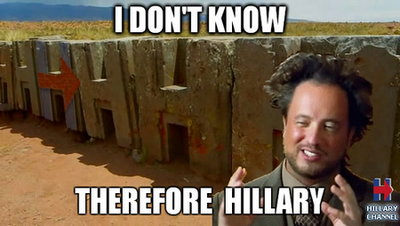
originally posted by: micpsi
The implication of the latter is that buildings once existed that exhibited a level of civilisation far higher that what orthodox archaeology is willing to admit. Let us not ignore the following vital point in the secondary question of whether H-blocks were meant to fit together and in similar technical questions about their function: the official history of ancient South American sites like Pumu Punku is bunk.
What higher intelligence? What higher advancement? We are still only talking about masonry and basic stool. Humans in the past were very good with stone all over the world. It wasn't like they were less intelligent than today, just less advance, but the intelligence was there.
I actually think that those window like stone insets were where they displayed something on the inside of the building. Only if they used it for
displaying human skulls to chase away people would they have it on the outside. Not too many people would steal a skull....except maybe teenage kids.
Things like this usually fall in two categories.
1, An engineering marvel created by white people.
2, Aliens!
1, An engineering marvel created by white people.
2, Aliens!
Ahh Puma Punku One of my Faves!
I still claim that there Once was a One World Civilization
There is many Similarities of the Old Work at the Puma Punku site that Shows in Designs from Ancient Egypt, Ancient Ethiopian and Ancient Sumerian Stone Masonry Work ,
for me its Simple follow the Structures /Sumeria/Egypt/Sudan/China/Indonesia/Belize /Easter Island/Peru/Mexico Spread through , over time a few thousand years , not all accurate in the Dating of Course , but I do see a pattern ,
from North Africa and Middle East Ancient Persia/Sumeria through China and South East Asia through Indonesia to Easter island too Tiwananco / Puma Punku and Ecuador then up through Central America to Mexico to even parts of Louisiana and Florida when it began loosing the Stone work from the Lack of Stone, and to be come mounds up to Ohio ,
if you want to have a Comparison of Similar Structures from pottery to Mason Work / Stonework from the Old and New World I suggest this Site
Artefacts, Atlantis and the route to the sea
www.atlantisbolivia.org...
The website link : May Claim it could of been trade Routes or Just Travelers Seeking new beginnings, but there was a Tale I remember that Egyptians had done So Travel to seek new Route and new Land ,
in some Writing they had ,
well for the Evidence for that : let alone Possible Sumerian's too,
World's Oldest Sea Vessels Discovered in Egypt
Richard A. Lovett
for National Geographic News
March 7, 2006
news.nationalgeographic.com...
Well in the Article The Egyptians Talk About a Land called Punt so called The Gods Land .
Wonder Were Punt is ? Possibly what I have mention All along
follow the Structures /Sumeria/Egypt/Sudan/China/Indonesia/Belize /Easter Island/Peru/Mexico Spread through , over time a few thousand years
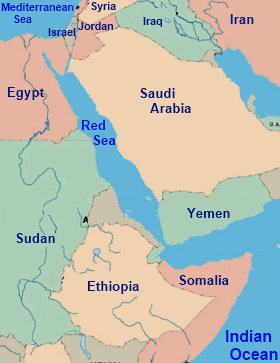
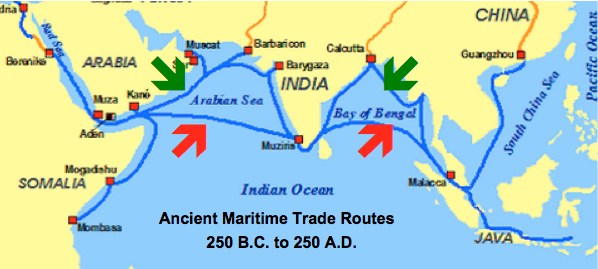
I still claim that there Once was a One World Civilization
There is many Similarities of the Old Work at the Puma Punku site that Shows in Designs from Ancient Egypt, Ancient Ethiopian and Ancient Sumerian Stone Masonry Work ,
Between the time when the oceans drank Atlantis, and the rise of the sons of Aryas, there was an age undreamed of.
for me its Simple follow the Structures /Sumeria/Egypt/Sudan/China/Indonesia/Belize /Easter Island/Peru/Mexico Spread through , over time a few thousand years , not all accurate in the Dating of Course , but I do see a pattern ,
from North Africa and Middle East Ancient Persia/Sumeria through China and South East Asia through Indonesia to Easter island too Tiwananco / Puma Punku and Ecuador then up through Central America to Mexico to even parts of Louisiana and Florida when it began loosing the Stone work from the Lack of Stone, and to be come mounds up to Ohio ,
if you want to have a Comparison of Similar Structures from pottery to Mason Work / Stonework from the Old and New World I suggest this Site
Artefacts, Atlantis and the route to the sea
www.atlantisbolivia.org...
The website link : May Claim it could of been trade Routes or Just Travelers Seeking new beginnings, but there was a Tale I remember that Egyptians had done So Travel to seek new Route and new Land ,
in some Writing they had ,
well for the Evidence for that : let alone Possible Sumerian's too,
World's Oldest Sea Vessels Discovered in Egypt
Richard A. Lovett
for National Geographic News
March 7, 2006
news.nationalgeographic.com...
The find supports evidence that ancient Egyptian mariners set sail on ocean waters as much as 4,000 years ago on voyages that spanned about 1,000 miles (1,600 kilometers) each way.
Well in the Article The Egyptians Talk About a Land called Punt so called The Gods Land .
Wonder Were Punt is ? Possibly what I have mention All along
follow the Structures /Sumeria/Egypt/Sudan/China/Indonesia/Belize /Easter Island/Peru/Mexico Spread through , over time a few thousand years


This is a great site, the writer is a professional molder and proposes very interesting theories/ experiments that show how the stones could have been
built..
pumapunkutheories.webs.com...
I also did a thread about this..
www.abovetopsecret.com...
pumapunkutheories.webs.com...
I also did a thread about this..
www.abovetopsecret.com...
Great thread, great OP.
Whatever was being built, a temple, a place of worship, a place for the higher status of these people's society whatever that could of been.....
Is less exciting then the means these stones were cut and crafted. That is what resonates people and probes questions of "how the fudge did an ancient people accomplish such fine stone work?"
The craftsmanship amd design is what is most intriguing.
Thanks for the great thread, S&F
Whatever was being built, a temple, a place of worship, a place for the higher status of these people's society whatever that could of been.....
Is less exciting then the means these stones were cut and crafted. That is what resonates people and probes questions of "how the fudge did an ancient people accomplish such fine stone work?"
The craftsmanship amd design is what is most intriguing.
Thanks for the great thread, S&F
what gets me is the Complex Work of the Stones in Puma Punku
to me and a few other here on ATS way back when on a few thread s
Look as if the H Blocks were Manufactured in assembly line
were placed in a mold and Poured. all Perfect & Accurate
and Interlocking Pieces ,
but what I noticed the Stonework looks as if its closely related to the ruins of Axum Ethiopia
to me and a few other here on ATS way back when on a few thread s
Look as if the H Blocks were Manufactured in assembly line
were placed in a mold and Poured. all Perfect & Accurate
and Interlocking Pieces ,
but what I noticed the Stonework looks as if its closely related to the ruins of Axum Ethiopia
originally posted by: JohanDees
a reply to: Elementalist
Thats because they are molded, or poured into forms, not carved.
Ive had a discussion about that Poured into forms Molds
In a long ago Thread with a few members
Shown here
awesome debates and discussions in the Thread
worth a read !
Tiahuanaco, Puma Punku the real mystery... ((( 275 flags ))) posted on Jul, 31 2011 @ 17:29
www.abovetopsecret.com...
a reply to: jeep3r
Thanks for not going all aleeeen on us. It is quite clear to those that actually take a look that the site and the quarry and the connecting roads and all the tools left behind show ordinary humans had enormous time on their hands, were indentured or enslaved to build their overlords monuments for them at great expense to themselves for a pittance, I am sure.
Kind of like every where else stone temples, monuments and gubment buildings still survive and oh... in some places they still erect giant structures this way today (by slave labor).
A thousand years from now they will marvel at the stubble of modern ruins and wonder about our highly developed 'technology'.
More info about Puma Punku can be found in "Collapse", a book about former civilizations and their structural archeology.
googled
Thanks for not going all aleeeen on us. It is quite clear to those that actually take a look that the site and the quarry and the connecting roads and all the tools left behind show ordinary humans had enormous time on their hands, were indentured or enslaved to build their overlords monuments for them at great expense to themselves for a pittance, I am sure.
Kind of like every where else stone temples, monuments and gubment buildings still survive and oh... in some places they still erect giant structures this way today (by slave labor).
A thousand years from now they will marvel at the stubble of modern ruins and wonder about our highly developed 'technology'.
More info about Puma Punku can be found in "Collapse", a book about former civilizations and their structural archeology.
googled
originally posted by: Wolfenz
I still claim that there Once was a One World Civilization
There is many Similarities of the Old Work at the Puma Punku site that Shows in Designs from Ancient Egypt, Ancient Ethiopian and Ancient Sumerian Stone Masonry Work
I think one of the indications for ancient builders having been active across continents long ago are the megalithic polygonal walls with precision fitting that we find in Greece, Italy, Peru and other places across the globe.
Sceptics of this idea believe that the ancients all came up indepedently with this construction style as a logical progression of dry stone walling.
But there are yet other similarities to be found in ancient megalithic masonry, which is why I believe there has been some kind of transcontinental contact between these cultures in the past.
originally posted by: anti72
This is a great site, the writer is a professional molder and proposes very interesting theories/ experiments that show how the stones could have been built..
pumapunkutheories.webs.com...
I also did a thread about this..
www.abovetopsecret.com...
Now that's what I call an interesting "hands-on" approach to finding alternative explanations. Love the idea to simulate the faintly visible lines in the Kantatallita stone using a plug made of balsa wood. I'm definitely going to spend some time reading up on his ideas and theories.
Thanks for sharing those links!
new topics
-
Jean Michel and Brian May Live from Bratislava
General Chit Chat: 3 hours ago -
Iranian Lawmaker Declares Iran Has Nuclear Weapons
Mainstream News: 5 hours ago -
Biden Withholding Sensitive US Intelligence on Hamas Leaders From Israel
US Political Madness: 7 hours ago -
Anybody else go to the movie theater a lot? Have you noticed how dead they are?
General Chit Chat: 7 hours ago -
Trump Record Breaking Campaign Rally 5/11 in New Jersey Draws 100,000 People
2024 Elections: 8 hours ago -
something falls in Canada
Aliens and UFOs: 8 hours ago -
US mistakes in assessing the military potential of China and Russia
ATS Skunk Works: 11 hours ago
top topics
-
Trump Record Breaking Campaign Rally 5/11 in New Jersey Draws 100,000 People
2024 Elections: 8 hours ago, 14 flags -
Biden Withholding Sensitive US Intelligence on Hamas Leaders From Israel
US Political Madness: 7 hours ago, 10 flags -
Anybody else go to the movie theater a lot? Have you noticed how dead they are?
General Chit Chat: 7 hours ago, 7 flags -
Jean Michel and Brian May Live from Bratislava
General Chit Chat: 3 hours ago, 5 flags -
US mistakes in assessing the military potential of China and Russia
ATS Skunk Works: 11 hours ago, 4 flags -
something falls in Canada
Aliens and UFOs: 8 hours ago, 4 flags -
Iranian Lawmaker Declares Iran Has Nuclear Weapons
Mainstream News: 5 hours ago, 3 flags
active topics
-
Iranian Lawmaker Declares Iran Has Nuclear Weapons
Mainstream News • 17 • : Onthelowdown -
Joe Biden and Donald Trump are both traitors
2024 Elections • 76 • : Xtrozero -
Trump Record Breaking Campaign Rally 5/11 in New Jersey Draws 100,000 People
2024 Elections • 71 • : xuenchen -
President Bidens Health is Declining Faster 5.8.2024 - He Should Stay Home.
2024 Elections • 47 • : burritocat -
Breaking--Hamas Accepts New Cease Fire
Middle East Issues • 427 • : Xtrozero -
Bibi’s Dilemma
Middle East Issues • 249 • : jofafot -
Mood Music Part VI
Music • 3175 • : paviabari -
The biggest problem with the Hush money trial
US Political Madness • 179 • : BernnieJGato -
Candidate TRUMP Now Has Crazy Judge JUAN MERCHAN After Him - The Stormy Daniels Hush-Money Case.
Political Conspiracies • 1502 • : xuenchen -
Biden Withholding Sensitive US Intelligence on Hamas Leaders From Israel
US Political Madness • 48 • : Dalamax
